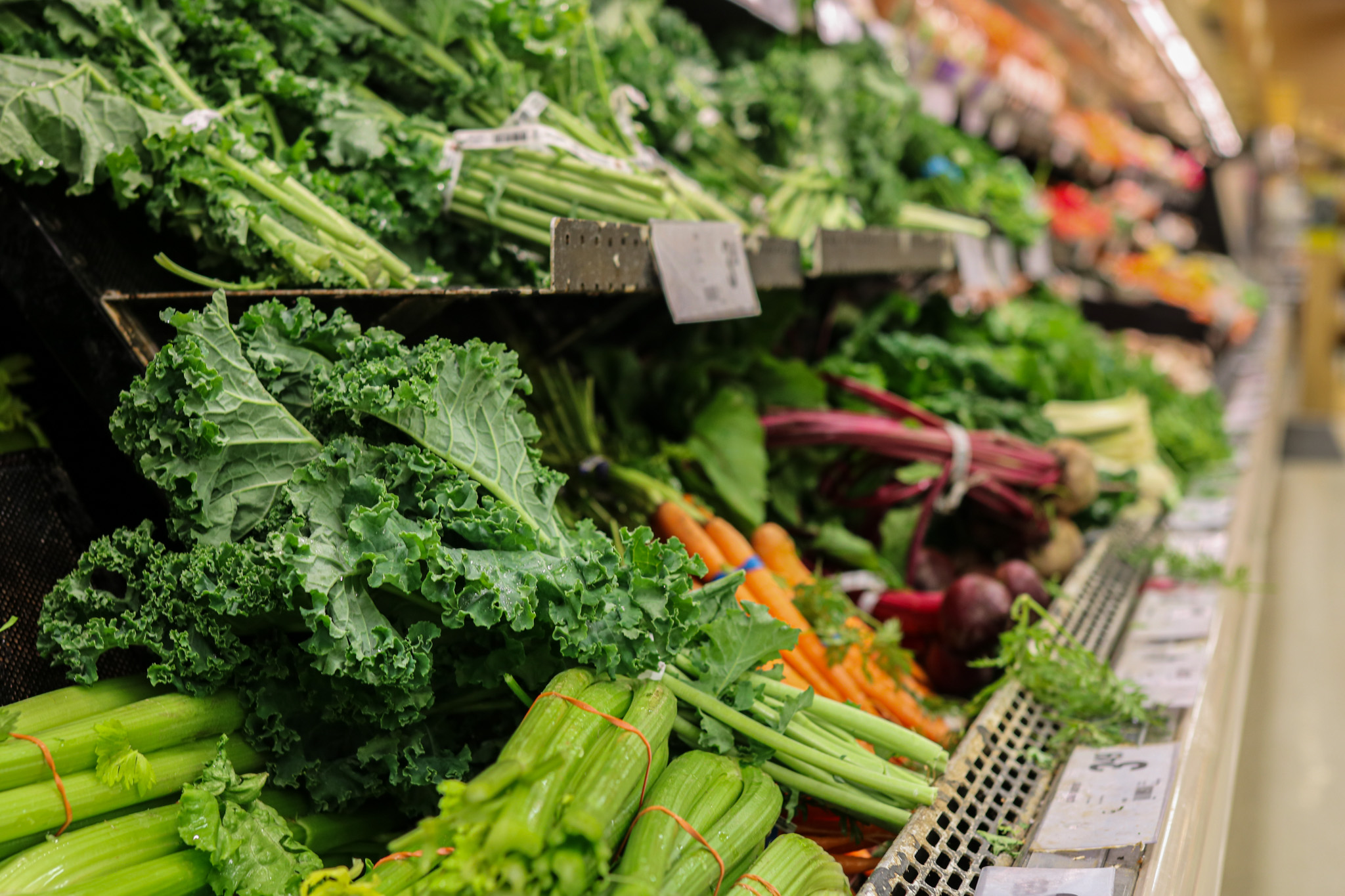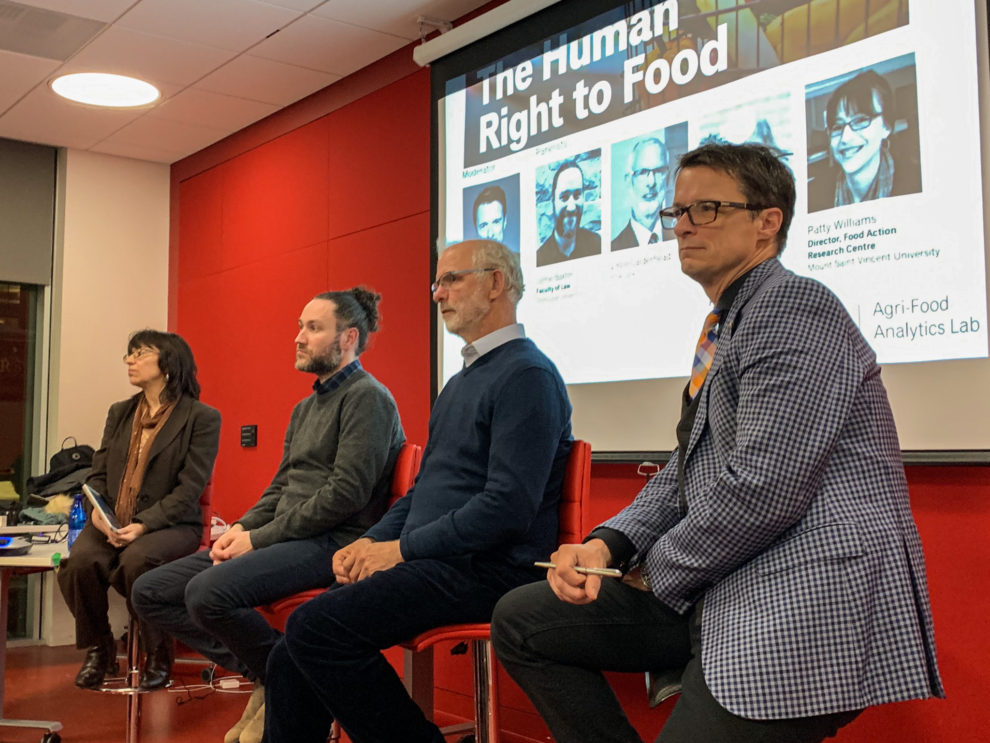Do we have a right to food? Halifax panel discusses food insecurity in Canada
Three panelists discussed the issue of food insecurity and what needs to change

caption
A grocery store's produce section.As food prices increase and climate change becomes a larger issue, many might be unsure of what’s going to be on their plates in the future.
With food security becoming more uncertain, is the government responsible for making sure everyone has the basic requirements for food? That’s what a panel called the Human Right to Food discussed in Halifax on Thursday evening. The panel of three was hosted by Dalhousie University’s The Agri-Food Analytics Lab and held at the Halifax Central Library.
“We need it for our physiological needs but it also bridges to our psycho-social needs,” panelist Patty Williams said. “I think it’s unique in that aspect in terms of the central role that it plays in so many aspects of our life. Other basic needs are essential, but there’s something special about food that is a connector.”
Williams is the director of the Food Action Research Centre at Mount Saint Vincent University. She spoke about the social, health and environmental issues of food insecurity.
Who’s food insecure
“The consequences of food insecurity are really far-reaching and long term, because when someone experiences food insecurity, it’s something they carry with them for their life, even if they’re in a different situation,” she said.
According to the latest data from Statistics Canada, Nunavut has the highest number of food insecure households at 49.4 per cent. Among the provinces, Nova Scotia has the highest at 11 per cent.
For some Nova Scotians, being part of that percentage is almost guaranteed.
“We know that in Nova Scotia, if you are on income assistance, that you are pretty well guaranteed to be food insecure,” Williams said.
A 2014 PROOF report says that in 2013 and 2014, 82.1 per cent of people living on income assistance in Nova Scotia were food insecure. Back in 2014, the report says 15.4 per cent of households in Nova Scotia were food insecure.
Food expenses
Financially, the situation isn’t getting easier for Canadians.
According to the latest Canada’s Food Price Report, overall food prices will increase by two to four per cent. It predicts the average Canadian family will spend $487 more on food compared to last year, an additional annual expense of $12,667.
Amy Moonshadow, the chair of the Community Advocates Network, said she doesn’t receive enough from income assistance. With basic expenses including food, utilities and transportation, she’s still short $165 every month.
“God forbid that low-income people should have a telephone,” she said during an interview.
“The ideal situation would be to have a basic, guaranteed, annual income for everybody,.The way of doing it is there already. They do it for children, with the child tax benefit, and they do it for seniors with the guaranteed income supplement.”
When shopping for food, Moonshadow makes note of when certain products go on sale. She also uses her resources, like going to places that provide free meals.
But even places like food banks aren’t beneficial long term. Williams said that while she’s noticed food banks have been trying to provide healthier food, they cover up the problem and are inadequate and dehumanizing.
“They take our governments off the hook as well because it hides the problem,” Williams said.

caption
The three panellists and host. From left to right: Patty Williams, Jamie Baxter, Vince Calderhead and Sylvain Charlebois (host). Kathleen Kevany from Dalhousie University’s Faculty of Architecture was scheduled to be on the panel but was absent due to a personal matter.What Canada’s doing
Another panellist, lawyer Vince Calderhead, said the government isn’t doing enough. Discussing concepts like food banks, Calderhead said he doesn’t think the issue is a question of how we can be more charitable.
“What does that have to do with the right? It only exists because there is not full protection of the right. I don’t think we should be focusing on how better to improve charity,” he said. “Governments have chosen to ensure that the poor are not given enough (nutritional) food to eat.”
In 1966, the United Nations (UN) introduced the International Covenant on Economic, Social and Cultural Rights in accordance with the Universal Declaration of Human Rights. This covenant, specifically article 11, gives people across the world the right to things like housing, clothing and food.
Even though Canada signed and ratified the covenant, Calderhead said it’s not directly enforceable in Canada because it’s international human rights law.
“For decades,” Calderhead said, “the Canadian government would show up at the UN and say, ‘Look, it’s fine. It’s actually paradise in Canada, things are going great.’
“Every five years, Canada has to report on how we’re doing [to the UN],” said Calderhead. “Repeatedly, I’ve been to these sessions, typically in Geneva, where we get to say, ‘Actually, things are getting worse in Canada when it comes to the right to food. The government usually just kind of shrugs it’s shoulders and says, ‘These are complicated issues.’”
In June 2019, the federal government released a $134-million national food policy. This policy focuses on issues like making healthy and nutritious food more accessible, supporting food security in Indigenous communities and reducing food waste.
But Williams said it’s only a “bare bones framework” and there’s yet to be any “meat” on the policy.
“Governments are only going to change if grassroots, if people, actually want it to change and speak up,” she said.
About the author
Chris Stoodley
Chris is a fourth-year student at the University of King's College. He's a big fan of all things visual and loves to keep up with the world of...
